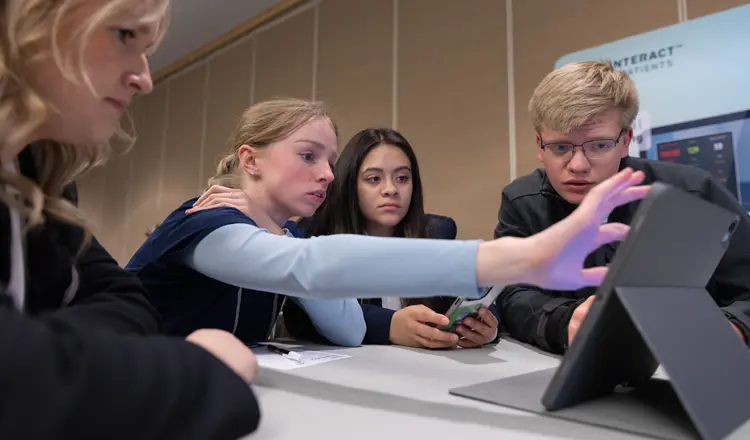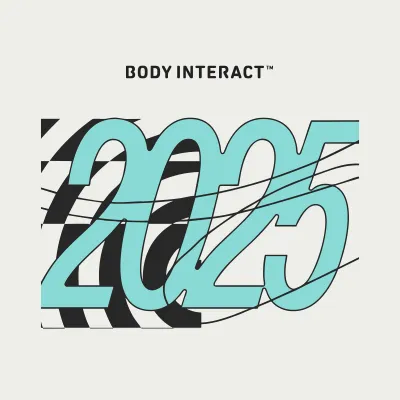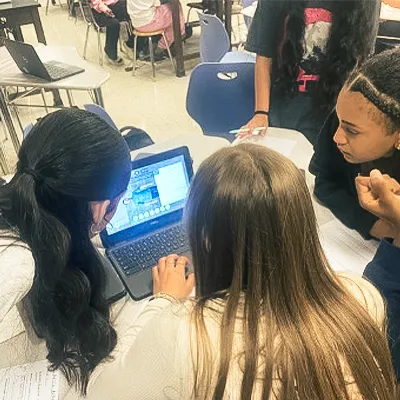Student Mentor and Capstone with Body Interact
Empowering Future Professionals
Beyond Clinical Judgment — Why Leadership and Teamwork Matter
In contemporary medical education, it is not just about learning excellent clinical judgment; communication and leadership skills must also be developed. One of the best ways to achieve this is through the combination of the Student Mentor Model and Capstone Projects, especially with the assistance of clinical simulation software like Body Interact. Not only is this more effective at improving learning outcomes but also helps students develop important professional competencies such as teamwork, decision-making, and self-reflection.

What Is the Student Mentor Model?
The Student Mentor Model is a peer-mentoring learning strategy in which senior or more advanced students’ mentor junior peers through authentic clinical scenarios. Through Body Interact’s simulated virtual patients, students are immersed in an active, decision-based setting in which they can exercise real-time clinical reasoning.
Here, the senior students play the role of attending physicians, supervising a team of residents, nurses, and fellow students. Each has a dedicated role—whether patient history taking, interpretation of diagnostic results, or intervention planning—fostering interprofessional collaborative learning. Instructors move out of the way of teaching and become facilitators, making contributions as they let the students take the lead. Teams have a facilitated debrief after each simulation to talk about what did and didn’t work and how to get better.
There is evidence to support this model: peer-learning not only supports junior students’ development but also boosts confidence, teaching skills, and professional identity of mentors (Ten Cate & Durning, 2007). While simulation-based learning is known to sharpen clinical thinking and teamwork, by combining the two, students gain practical experience in a safe, supportive setting, moving from book learning to actual practice.
Capstone Projects with a Purpose
When used for a Capstone Project, the Student Mentor Model enhances simulation training depth. Culminating projects generally require students to synthesize knowledge across their program, and thus, Body Interact is a perfect fit.

How Body Interact Adds Value
- Enables clinical integration by simulating real-world diagnostic and treatment decision-making
- Promotes professional development through documentation of leadership, teamwork, and problem-solving
- Enhances self-reflection and feedback, critical for continuous improvement
- Through blending mentorship and simulation in Capstone projects, students gain real-world experience with entrepreneurial mindset, prepared for real healthcare roles
Why It Matters — Key Benefits for Educators and Students
- Blending the Student Mentor Model and Body Interact into your curriculum can:
- Brew senior students as leaders and educators
- Build clinical competency and confidence in junior students
- Support reflection and lifelong learning
- Improve communication and teamwork skills
- Improve overall student motivation and engagement
Ultimately, this model turns the classroom into a realistic simulation zone where students not only learn about healthcare, but also how to deliver it.
Ready to Empower Your Students Through Simulation?
With Body Interact, you can transform traditional teaching moments into realistic clinical experiences that prepare students for real-world challenges.
Let’s talk about how to integrate peer mentoring and simulation into your curriculum.
References
1. Ten Cate, O., & Durning, S. (2007). Peer teaching in medical education: Twelve reasons to move from theory to practice. Medical Teacher, 29(6), 591–599. https://doi.org/10.1080/01421590701606799
2. Burgess, A., McGregor, D., & Mellis, C. (2014). Medical students as peer tutors: A systematic review. BMC Medical Education, 14, 115. https://doi.org/10.1186/1472-6920-14-115
3. Brierley, C., Ellis, L., & Reid, E. R. (2022). Peer-assisted learning in medical education: A systematic review and meta‑analysis. Medical Education, 56(4), 365–373. https://doi.org/10.1111/medu.14672
4. Ball, R., Sherwood, E., Ryznar, R., LaPorta, A., & Choudhury, Q. (2019). Evaluation of the Body Interact Virtual Patient Simulator in training medical students [Poster presentation]. Rocky Vista University College of Osteopathic Medicine.
5. Reid, E., Ellis, L., & Brierley, C. (2012). Capstone teaching models: Combining simulation, analytical and intuitive learning processes—History and effectiveness. ResearchGate.









